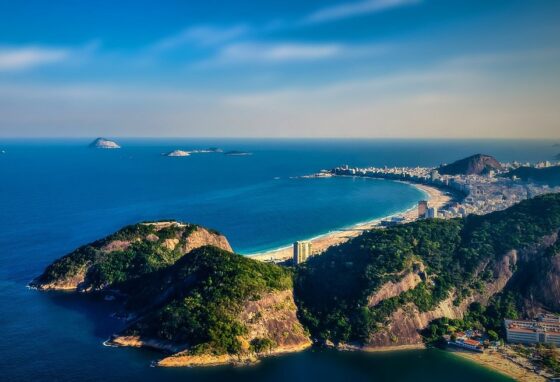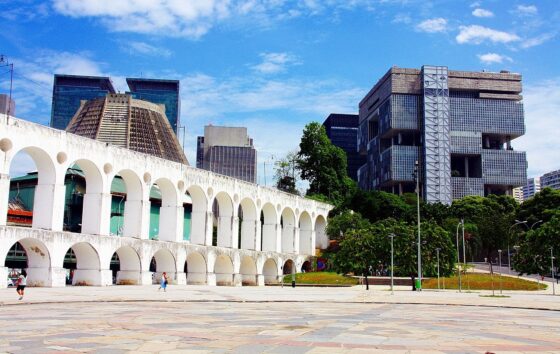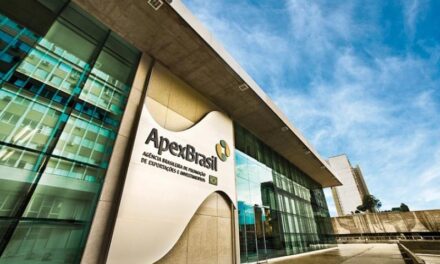By Livia Caroline Neves | Translation: Magali DaSilva
“Cristo Redentor, open arms on Guanabara, this samba is just because, Rio I love you, the brunette will dance the samba…”. “From Tom to Vinícius, from Cinelândia to Arpoador, from the Mangueira to the Sugar Loar, from Copacabana to the Dois Irmãos…”.
One word to describe the “Carioca” is happiness. To be in Rio is to be in love with it, and to be in love with the girl that passes on the way to the sea. To feel Rio is to drink a cold beer on the beach, to have redemption as reference and a compass, to go to Maracanã (soccer stadium) and to dance the samba at Sapucaí Street. Our passion begins in the air. I am suspicious to talk about my “Wonderful City”; yet proud to be Carioca (from Rio).That city fascinates me, seduces me each more day, and the missing multiplies from being so far away.
Embedded between the mountains and the sea, Rio de Janeiro is an uncommon city for its geography, and is surely the more known point of the Brazilian territory all over the world. Anyone who has only a minimum knowledge of Brazil, when hearing of the country, automatically associates it with the “wonderful city”. The capital of the state of Rio de Janeiro gathers natural beauties that go from the beaches that cut out its coast, like the Arpoador, Ipanema and Copacabana, to hills that mark its landscape, like the Corcovado and Pão de Açúcar (Sugar Loaf).
Today, Ipanema and Leblon are synonymous of glamour, charm, and night-life. They are neighborhoods better to be known by walking, when one will have a clear idea of the carioca day-by-day that lives in a neighborhood eternalized by Tom Jobim and Vinícius de Morais. The Cultural Center Laura Alvim, that offers an changing program of theatrical pieces and exhibitions, and the Hippie Fair at General Osorio Park on Sundays; offering naïf art, artisan works, leather goods and even instrumental instruments, is not to be missing – a “must to go”. The Girl from Ipanema Park in Arpoador is where on Sundays you can enjoy free music concerts, and on the beach (every day) you can meeting several local surfers’ attracted by waves of perfect drawing.
On Leme’s beach and Copacabana, you can find a bike lane of 4.150 meters, apprentices of footvolley and beach volleyball, as well free yoga and tai chi chuan classes for the community right in front of the sea! In São Conrado’s beach you can appreciate the City’s Hangliders who use the beach as their main landing site, or if you dare, you can arrive to the Pedra da Gávea (Gavea Rock Mountain) for those moments of pure beauty and adrenaline. Following West along the coast you will find the beaches of Barra da Tijuca and Recreio dos Bandeirantes (for those interesting in theme parks and large shopping malls), as well Prainha, Grumari, Barra de Guaratiba and Sepetiba, which still reflect traces of the virgin Rio of 500 years ago when Brazil was discovered.
The largest urban forest of the world, Tijuca Forest, was entirely reforested after the second half of the XIX century. The landscape is “cinematography” and scenery of many films and TV shows. It is a pure delight view from an airplane. When landing, the almost feminine curves of the Guanabara Bay outline the embankment and contemplate the Sugar Loaf. There is no better itinerary to arrive to the city.
Rio de Janeiro is still one of the principal centers irradiators of national culture, the cradle of musical genders as the samba, choro and the bossa nova. The carioca’s cheerful and communicative way is attributed to the poetry and musical “soul” that birth in each corner of this wonderful city, as well from the privileged geographical nature. Whoever wants to know the details of the indigenous culture – the original population of Brazil, should reserve a time to visit the Indian Museum, in Botafogo. The Museum besides vestments, utensils, weapons and two authentic native houses, counts with a rich collection of pictures and documents that registers the history of such reduced population. Those interested in handmade pieces can visit the Folklore Museum Edson Carneiro, neighbor to the Republic Museum in the neighborhood of Catete – the government’s old palace when Rio was the capital of the Republishes.
bossa nova. The carioca’s cheerful and communicative way is attributed to the poetry and musical “soul” that birth in each corner of this wonderful city, as well from the privileged geographical nature. Whoever wants to know the details of the indigenous culture – the original population of Brazil, should reserve a time to visit the Indian Museum, in Botafogo. The Museum besides vestments, utensils, weapons and two authentic native houses, counts with a rich collection of pictures and documents that registers the history of such reduced population. Those interested in handmade pieces can visit the Folklore Museum Edson Carneiro, neighbor to the Republic Museum in the neighborhood of Catete – the government’s old palace when Rio was the capital of the Republishes.
Besides the being the postcard city, however, another city lives together in the carioca hills, where blunt slums and poverty exists – but also where the largest popular manifestation of the country was born, the Carnival – a party that mixes rich, poor and all the ethnics in a same avenue.
A city like this, with so many attributes of natural beauty and cultural spaces could only have one of the largest parties for New Year’s Eve in the world. And it does! Imagine more than 3 million people at Copacabana beach at midnight on December 31. Imagine a show of fireworks that lasts more than 25 minutes, while in the sand, stepped on, and on the asphalt without cars everyone is greeted, drinking champagne, wishing a better new year to the friends and those unknown. Imagine a crowd dressed of white, symbolizing the peace and the hope of a better year, in one of the largest manifestations registered in the modern world.
There are mounted stages in different points of the sand where singers of the Brazilian popular music perform. The access to the neighborhood is closed off to cars and buses, at 6:00 pm. The commemoration of the passage of the year involves the entire city. Residents or visitors fraternize infected by the same euphoria. A cheerful and happy spirit dominates the minds and bodies that are there. There are 4 km of fireworks bursting in the sky from the Copacabana hotel’s and by other points by the sea. Places and tourists came from the four corners of the world to say goodbye to the passing year and to celebrate the arrival of a new one. And everything that is unassuming can be enjoyed without having to pay absolutely anything!
Sometimes we need peace and a time to relax, or an alternative escape to be close with nature. Rio also has this to offer. It is at random that it is known as Wonderful City. There are many exotic and paradisiacal places in the or close the city. For those who prefer the green outdoors and want adventure in the Atlantic forest, I suggest the National Park of Tijuca. It looks like an urban safari! And cut by trails in the middle of a Rain Forest. It is home of birds, small mammals, rodents and colorful butterflies. On a walk or jogging through the “Estrada das Paineiras”, you will find a big wall for climbing, and getting refreshed in the natural water falls. In the Medanha Sierra on West side you will find even an extinct volcano, known as Chamine do Larrego.
A traditional tour by car or van should start with a drive along Lucio Costa Ave. in Barra da Tijuca. The Avenue runs along between the sea, a thin sand strip and preserved swamp. From the road it is possible to see wildlife and with a bit of luck, even the yellow neck alligator. On the Big Island (published on Soul Brasil edition 4), in the South Coast only 2 hours by car, you will find a lot of peacefulness, crystalline water and much green! And in Búzios (published on Soul Brasil edition 6) on the North coast only 2 hours away, you will find a refined mixture of beautiful people, simplicity & natural harmony, and so many options for water sports.
If you love the mountains, in the area of Nova Friburgo you will find the small towns of Lumiar and São Pedro da Serra with exuberant natural attractions where nature is preserved and a perfect getaway for romantic couples. There are rivers, waterfalls and cozy bread & breakfast style hotels. An example of that preservation is the Toca da Onça – the access starts from the highway Lumiar – Casimiro de Abreu, km 9, the Germans bridge in the direction of Quartéis.
This is an ideal place for picnics, good reading, and romance! Another beautiful place is Andorinhas (swallows), 2 Km from the Lumiar. A waterfall of ten meters meets a lake, where the swallows go in flight to drink water in the summer. Extraordinary!
Blessed by Cristo Redentor, naturally beautiful, immortalized in the memory of each one that came, and in the hope of the ones that will still come, the city of Rio de Janeiro can reaffirm its vocation and continues to be beautiful… To really know, or better, to understand the meaning of the name WONDERFUL CITY, only going there to live and to feel the incredible magic and the high carioca spirit that is contagious to all! Go, know Rio, you will love it!
* For airline tickets from the U.S to Brazil or Latin America, customized travel packages, hotels and cruises, please visit our travel agent page or contact Magali Da Silva by phone or whatsapp: 1 (323) 428-1963.















